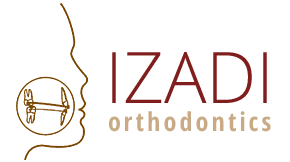A cleft palate is a condition where the roof of the mouth doesn’t fully close during development, leaving an opening or gap. This condition can occur on its own or alongside a cleft lip, which is a split in the upper lip. While cleft palates are typically identified at birth, the challenges they present can last a lifetime if not properly addressed.
Dr. Izadi wants to help patients and their families understand the issues associated with cleft palates and guide them through treatment options to improve their quality of life.

Common Problems Caused by Cleft Palates
Cleft palates can lead to a variety of difficulties, some of which may require specialized care:
1. Feeding Issues
One of the first challenges newborns with a cleft palate face is difficulty feeding. The gap in the roof of the mouth makes it hard for babies to create the suction needed for breastfeeding or bottle-feeding. Special bottles and nipples can help, but professional guidance is often necessary to ensure the baby is getting enough nutrition.
2. Speech and Communication Challenges
As children with cleft palates grow, they may experience problems with speech. The gap in the palate can affect the way sounds are produced, leading to nasal or unclear speech. Speech therapy helps children develop clearer communication skills.
3. Hearing Loss
Cleft palates are associated with an increased risk of ear infections and hearing loss. The condition can affect the Eustachian tubes, which connect the middle ear to the back of the throat. Fluid buildup in the ears is common, and untreated infections can lead to long-term hearing problems.
4. Dental Problems
Dental health is often a concern for individuals with cleft palates. Teeth may grow in abnormally, be missing, or be misaligned, leading to challenges with biting, chewing, and oral hygiene. Orthodontic treatment and regular dental care are essential to maintaining oral health.
5. Emotional and Social Impact
Children and adults with cleft palates may face emotional challenges, including low self-esteem or social anxiety. Visible differences, speech difficulties, or hearing problems can affect confidence and social interactions. Counseling and support groups can play a crucial role in addressing these concerns.
Treatment Options for Cleft Palates
Fortunately, there are many effective treatments available for cleft palates. The specific approach depends on the individual’s needs and the severity of the condition.
- Surgery: To close the gap in the palate, surgical repair is typically performed within the first year of life. Additional surgeries may be needed as the child grows.
- Speech Therapy: After surgery, speech therapy helps individuals improve their ability to speak clearly.
- Orthodontics: Braces and other orthodontic treatments address misaligned teeth and jaw issues.
- Hearing Support: Regular hearing tests and the placement of ear tubes can prevent long-term hearing problems.
- Psychological Support: Counseling and support groups help individuals and families cope with the emotional aspects of living with a cleft palate.
A Path Toward a Healthier Future
Cleft palates can pose significant challenges, but with the right care, individuals can lead healthy, fulfilling lives. Dr. Izadi provides expert guidance and compassionate care to address the unique needs of patients with cleft palates.
If you or a loved one is dealing with the effects of a cleft palate, don’t hesitate to reach out. Together, we can explore treatment options and work toward a brighter, healthier future.
